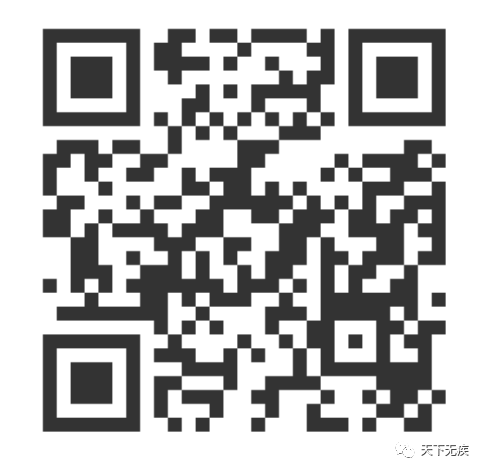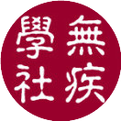Since October, a wave of external pathogenic factors has been intensifying. On November 20 (Monday), I personally experienced the process of this round of external pathogenic fever.
In the past two days at the clinic, I have continuously treated many patients with external pathogenic fever and cough, mainly children, which left me feeling quite exhausted. After finishing my clinic on the evening of the 19th, I felt a chill and could not stop sneezing. In the past, I would have immediately taken a bag of Tongrentang Cold and Heat Relief Granules. However, at that time, I had no means to do so, and by the time I got home, the feeling of cold had diminished. I didn’t pay much attention to it.
During each clinic session, I have to speak a lot but often have no opportunity to drink water. Therefore, after each clinic, I would feel extremely thirsty; for dinner, I would drink a lot of soup or beer. The 18th and 19th were no exception, and I felt bloated and uncomfortable in my stomach. Additionally, on the evening of the 18th, I felt the indoor temperature was very high, with a sensation of dryness and heat. However, on the evening of the 19th, I felt a persistent chill and needed to cover myself with two layers of blankets, yet I still didn’t pay much attention to it.
Usually, every morning around six o’clock, I perform self-acupuncture. After acupuncture, I always feel refreshed. However, this morning after acupuncture, I still felt somewhat fatigued, with discomfort in my lower back. I thought it was due to the fatigue from the clinic and still didn’t pay much attention to it.
Typically, after a nap, my physical strength and energy are well restored, and I feel very energetic. But after my nap on the 20th, I still felt fatigued, and I began to have a headache, with a subtle feeling of fever throughout my body. Around two in the afternoon, I took my temperature, which was 37.5 degrees Celsius. I had no sweat. I took a bag of midday tea granules and a bag of Tongrentang Cold and Heat Relief Granules. There was a slight sign of sweating on my forehead, but due to various matters, I could not rest in bed. After moving around, the sweat disappeared completely. After that, my temperature gradually rose to 38 degrees Celsius. After drinking a bowl of porridge, I sweated profusely, and my headache slightly eased, but my temperature did not drop.
Upon examining my pulse, the right pulse was slippery and rapid, while the left pulse was slippery, rapid, and slightly wiry. I took a bag of Sanjiu Cold Relief Granules and a bag of Sanjiu Xiao Chai Hu Granules. After that, I continued to sleep deeply. Around 5 PM, I woke up, and my temperature had dropped to 37.6 degrees Celsius. For dinner, I continued to drink porridge and then took four Yinqiao Detox Tablets, continuing to sleep. By 7:30 PM, I woke up again, and my temperature had dropped to 37.4 degrees Celsius. By 9:30 PM, it had dropped below 37 degrees Celsius. I took another four Yinqiao Detox Tablets and continued to sleep. By 1:30 AM, my temperature had dropped to 36.2 degrees Celsius, and I had fully recovered.
On the morning of the 21st, apart from feeling weak, I had no other discomfort. I performed acupuncture again, leaving the needles in for about an hour, but there was no movement in the abdominal qi. In the past, usually after leaving the needles in for about half an hour, there would be signs of abdominal qi movement or gas release. I continued to rest quietly until around two in the afternoon, when I woke up from my nap, and my physical strength and energy had basically returned to normal.
This is my own case. Regarding external pathogenic fever, it is a minor case. However, combining my past experiences and recent experiences treating patients with external pathogenic fever, there are still many insights.
First, the presence of righteous qi within prevents pathogenic factors from invading is not just an empty phrase.
This round of external pathogenic factors has been reported to have a particularly slow recovery, often with cough lasting more than a month without improvement. However, in the early stages, my clinical experience was that it did not seem serious and was not too difficult to treat. Basically, after acupuncture and a few commonly used Chinese patent medicines, it could be quickly resolved. It was only after treating many first-time patients with external pathogenic factors (mainly children) in the past two weeks that I understood the crux of the problem.
Previously treated patients with external pathogenic fever had been following my treatment for a long time, and their internal issues had been improved to a certain extent. In other words, their righteous qi was relatively abundant. In contrast, the first-time patients with external pathogenic factors this round had tried various methods but still repeatedly experienced external pathogenic factors or recurrent cough and fever, indicating that their righteous qi had been severely damaged. The strength of righteous qi varies, which affects the risk of disease occurrence; even when ill, the speed of recovery will also differ.
For me, before 2018, I would almost experience one or two major external pathogenic coughs every year, each lasting one to two weeks. However, in the past two to three years, I have rarely experienced external pathogenic factors; even when I did, such as during the first wave of COVID-19 last year, I recovered in just two days. This round of fever rose and fell in less than 12 hours. The key is that my righteous qi has become more abundant. In addition to reduced work stress and emotional discomfort, a very important variable is acupuncture.
In the past three years, I have performed self-acupuncture almost every morning around six o’clock, regardless of whether I have any physical discomfort. The direction of acupuncture is only one: to balance the qi and blood. As the qi and blood are balanced, the righteous qi naturally becomes abundant. Only by personally experiencing the changes brought by abundant and insufficient righteous qi can one have the deepest understanding of the phrase “the presence of righteous qi within”.
Secondly, being attentive is very important. Even with abundant righteous qi, being attentive is still crucial. Especially when the body is originally in poor condition, if signs of external pathogenic factors appear, one must pay enough attention. In fact, before the formal onset of my external pathogenic factors on the afternoon of the 20th, my body had issued three warnings. First, on the evening of the 19th, the chills and sneezing after finishing the clinic were the first warning. The second warning was the chills while sleeping on the night of the 19th. The third warning was the severe fatigue on the morning of the 20th. Unfortunately, I ignored all three warnings. If I had taken two bags of Cold and Heat Relief Granules in advance, I might have avoided the suffering that followed.
Fortunately, it is not too late to adjust when the pathogenic factors are relatively superficial. Although I occasionally have a cough or two, the pathogenic factors have not deeply invaded overall.
In life, many times, not to mention three small warnings, even ten may not lead to real attention. By the time the disease truly arrives, the time, energy, and economic costs expended may be much greater.
Finally, it is necessary to master the usage of some common Chinese patent medicines. Timely use of the right Chinese patent medicines in the early and late stages of illness can potentially prevent a disease or shorten its duration or reduce its occurrence. Below, I will summarize the Chinese patent medicines I have recently used to treat this round of external pathogenic fever for reference.
1. Early Stage of External Pathogenic Factors
(1) Low-grade fever (below 38.5 degrees Celsius), chills, no sweat, mostly due to wind-cold, suitable for inducing sweating and relieving the exterior. The first choice is Tongrentang Cold and Heat Relief Granules.
If there is significant coldness and severe chills, use three to five slices of ginger boiled in water to dissolve the Cold and Heat Relief Granules.
If there are significant chills and a weak spleen and stomach, use Yunnan Baiyao Wind-Cold Cold Relief Granules.
If there is a constitution of weak cold, use Zhanghe Gui Zhi Granules.
If there is food stagnation or dampness, use Midday Tea Granules.
If there is a bitter taste in the mouth, with a wiry left guan pulse, add Xiao Chai Hu Granules.
If there is a slight cough, add Tongrentang Tongxuan Li Fei Oral Liquid.
(2) Low-grade fever (below 38.5 degrees Celsius), sore throat, sweating, red tongue, mostly due to wind-heat, suitable for clearing heat and relieving the exterior. The first choice is Baiyunshan Yinqiao Detox Granules.
If unavailable or if time is short, Sanjiu Cold Relief Granules can be used.
If the condition is lighter, Tongrentang Yinqiao Detox Tablets can be used.
If there is significant sore throat and a notably red tongue, use Sanjing Shuanghuanglian Oral Liquid; if insufficient, use Baiyunshan Qingkailing Oral Liquid.
If there is a dry sore throat, with a weak left chi pulse, add Xuanmai Gancao Jujube Granules.
(3) Fever (38.5-39.5 degrees Celsius), not afraid of cold, afraid of heat, sweating, red tongue, more serious condition, if accompanied by hard stools, at least not unformed stools, can try Lianhua Qingwen Granules. At this stage, often requires decoction treatment, not recommended for non-professionals to self-treat.
2. Late Stage of External Pathogenic Factors
(1) Daytime cough is significant, worsens with movement, mostly due to qi deficiency. The first choice is Tongrentang Shen Su Tablets.
If children have difficulty taking it, use Shen Su Oral Liquid.
If the cough is severe, add Tongrentang Tongxuan Li Fei Oral Liquid.
If there is a lot of phlegm, white in color, add Baiyunshan Juhong Phlegm Cough Granules.
If there is a lot of phlegm, yellow in color, with a red tongue, add Shenwei Xiaoer Qingfei Huatan Granules.
If there is poor appetite, add Jiangzhong Jianwei Xiaoshi Tablets.
(2) Cough is significant at night, mostly due to yin deficiency. The first choice is Tongrentang Yangyin Qingfei Syrup.
If the cough is severe, add Tongrentang Tongxuan Li Fei Oral Liquid.
If there is fatigue and weakness, add Tongrentang Shen Su Tablets.
The above is my general medication approach for patients with external pathogenic fever and cough in the recent Beijing area.Specific diagnosis and treatment need to be adjusted according to the individual, specific condition, specific time, and region, and it is difficult to cover all aspects.The listed medicines are for reference only and should not be used as clinical medication guidelines.
That said, at this point, the situation becomes much more complicated. In comparison, if the righteous qi is maintained in the first step and attention is kept in the second step, perhaps there would not even be a need for this third step.
This article is selected from the “Growth Community for TCM Enthusiasts” organized by Wujin Academy. Long press to recognize the QR code below for more details. Wujin Academy, 2023 Learning Theme: Advanced Acupuncture.Selected Content from the Community1. Acupuncture, carving beauty in time 2. TCM teaches you how to rest efficiently 3. Daily maintenance of the spleen and stomach 4. Is room temperature water considered cold? 5. Allergies, how does TCM view them? 6. When hormones become medicine 7. From qi and blood to kidney essence 8. Why is the stomach strong but the spleen weak? 9. Cherish kidney essence, do three things wellLong press to recognize the QR code belowJoin the Growth Community for TCM Enthusiasts

